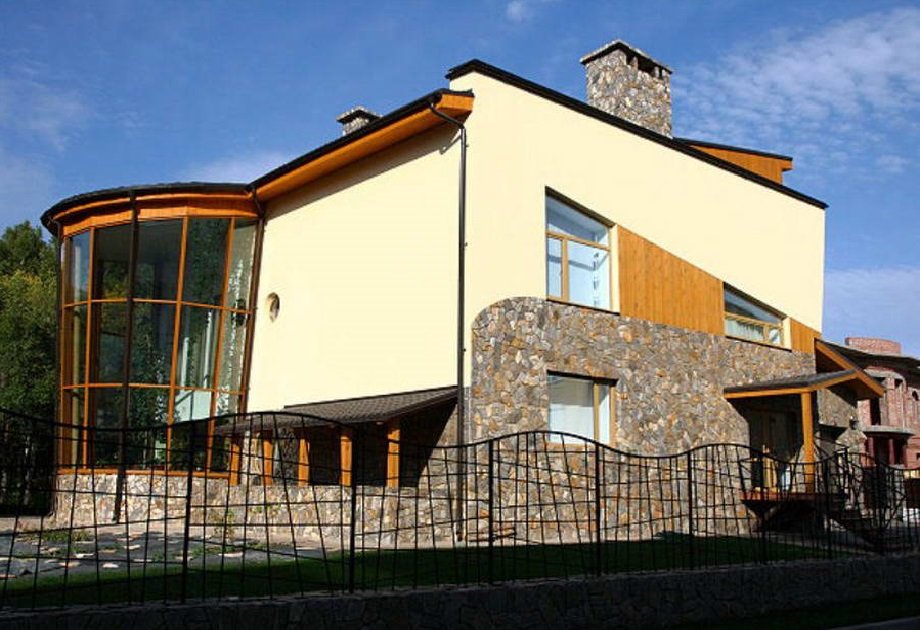#13611. Modern two-story house with a contrasting facade of stone, wood, and plaster
This architectural object is a modern two-story house with an expressive facade that combines several stylistic directions. The composition is based on the contrast between warm natural materials and clean geometric forms. The facade skillfully combines three main finishing materials: light beige plaster, natural stone, and wooden elements, creating a rich textural interplay.
Special attention is drawn to the semi-circular corner element with panoramic glazing, which becomes the dominant component of the composition, adding dynamism to the entire structure. The glazing with wooden frames creates an effect of openness and connection with the surrounding environment. The stone cladding used for the plinth, part of the facade, and chimney provides visual strength and solidity, while also bringing an element of rusticity to the modern architecture.
Facade design of this type requires a deep understanding of the compatibility of materials and forms. In this case, the architect masterfully uses the principle of contrast — straight lines of flat surfaces are juxtaposed with curved forms of glazing, and smooth plaster neighbors textured stone and warm wood.
It's worth noting the successful use of canopies and protruding elements that not only create a play of light and shadow on the facade but also have functional significance. The wrought iron fencing emphasizes the privacy of the space while maintaining visual lightness.
When designing your own house, you can adopt techniques such as combining materials with different textures to create visual interest, using panoramic glazing for significant spaces, and introducing curvilinear elements to soften the strict geometry of the building.
